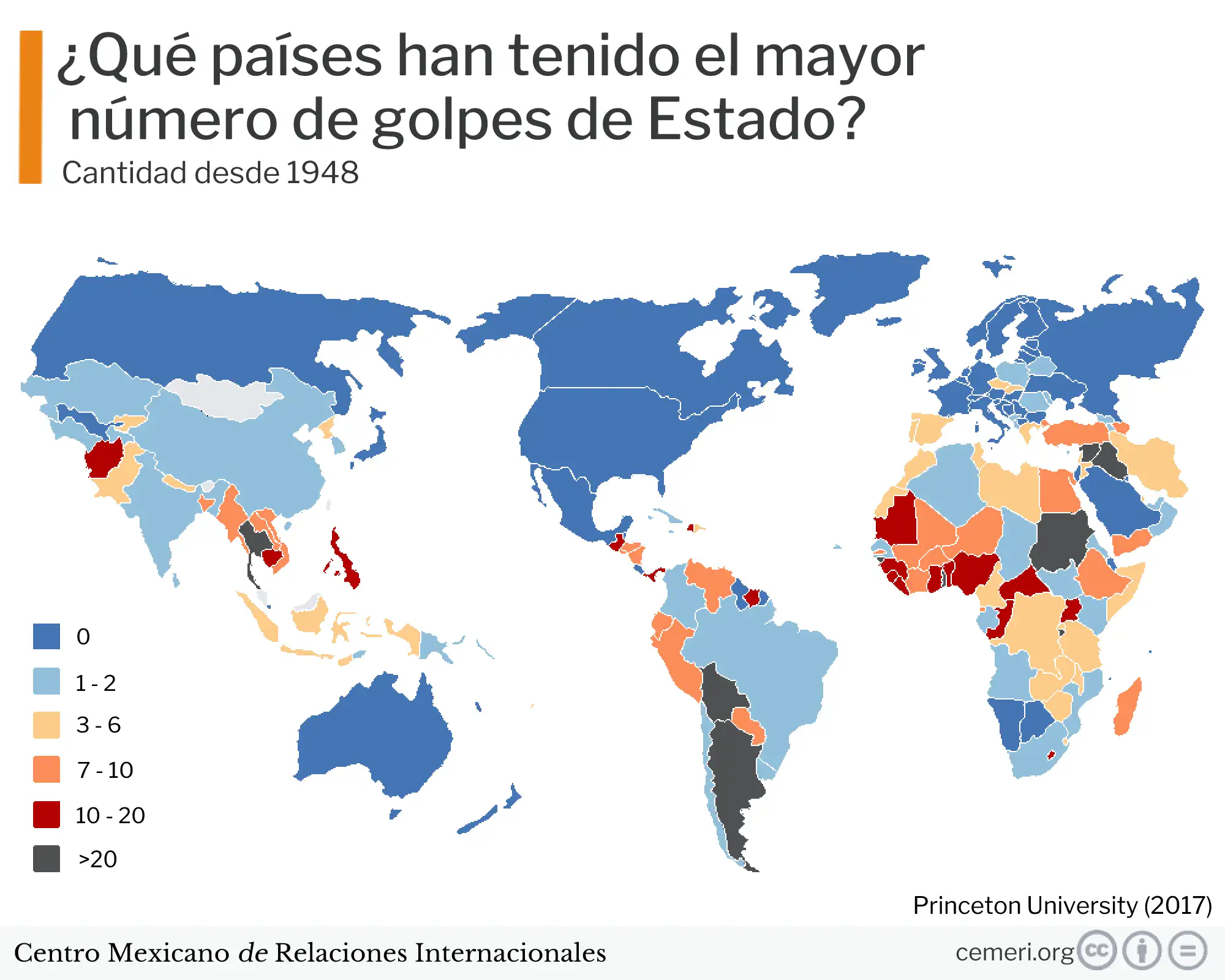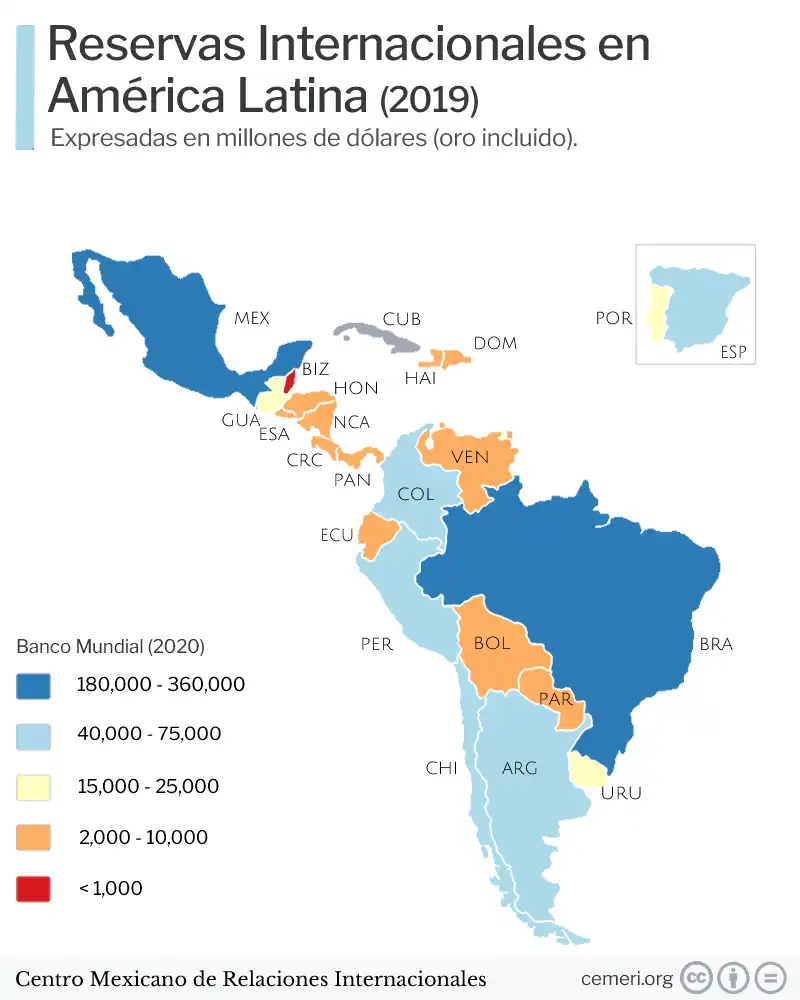Map
Christian Alonso
Which countries have had the highest number of coups d'état?
- These occur through the use of force, deposing elected powers and replacing them.

The recent coup d'état in Myanmar adds to a series of conflicts and uprisings carried out in the Asian country since its establishment as an independent country. This fact calls into question the effectiveness of democratic institutions, as well as the power that military groups still retain and their structural position that facilitates their participation in the political affairs of the countries.
For decades, coups have been recurrent in the vast majority of countries around the world, however, some of them have gone unnoticed because they do not theoretically comply with the classic definitions of it. However, the debate falls on whether these definitions manage to identify and explain these phenomena regardless of the way in which they arise, or whether it is necessary to reformulate the concept for a better understanding and analysis.
In order to identify the limitations that arise in this concept, we must go back to its origin, which was created during the 17th century in France in the book Considerations politiques sur les coups d'État, by Gabriel Naudé, who defines coups of State as "daring and extraordinary acts that princes are forced to carry out in matters as difficult as they are desperate, against the common law and regardless of any order or form of justice, putting private interest at stake for the benefit of the good common”[1].
Through his book, Naudé analyzes the situations in which the Coup is used as a political instrument, which are: 1) the foundation, birth or change of a Kingdom; 2) the conservation, reestablishment or restoration of a State that is threatened by the fall; 3) weaken rights or privileges of some subjects that diminish the authority of the prince; 4) establish some important law or some important regulation or decision; 5) destroy some power that, because it is too great, numerous or extended in various places, cannot be easily defeated by ordinary procedures; 6) give authority or prestige to a prince, and 7) limit or destroy the excessive power of those who want to abuse it to the detriment of the State.
Centuries later, the concept granted by Naudé evolved, adding a greater number of characteristics until, finally, the military factor was assigned as the promoter of said act. In the classic sense of coups d'état, it is understood, then, that they are “... unregulated conflicts that break all the rules and that reformulate the powers of the State; but, in any case, they always end up attributing more power to the armed forces.” These are created through the use of force, thus deposing the democratically elected powers and replacing them, in most cases, by military juntas.
However, this definition fails to give an explanation to those events where the democratic powers in a non-violent way. For this understanding, various authors consider that the Coups are not necessarily carried out by the military, but can be carried out by any State institution that illegally expels the legitimate power. This provides a much broader definition and helps to understand those coups or attempted coups that took place in different countries where there was no military participation.
In this way, the following map is a graphic representation of the coups d'état that have taken place around the world since 1948. It contains a compilation of successful and failed coups, as well as attempts, by various factions (military, rebels, , institutions, or foreign forces). It should be noted that the information expressed in this map is compiled directly from the Princeton University databases.
Sources
Martínez, Rafael, subtipos de golpes de Estado: transformaciones recientes de un concepto del siglo XVII, revista CIDOB d´afers internacionals, n. 108, pp. 191-212. Disponible en: https://www.cidob.org/content/download/58940/1536776/version/2/file/191-212MARTINEZ_RAFAEL.pdf
Princeton University, Coups d’Etat 1946-2018, Data and statical services. Disponible en: https://dss.princeton.edu/catalog/resource1509

